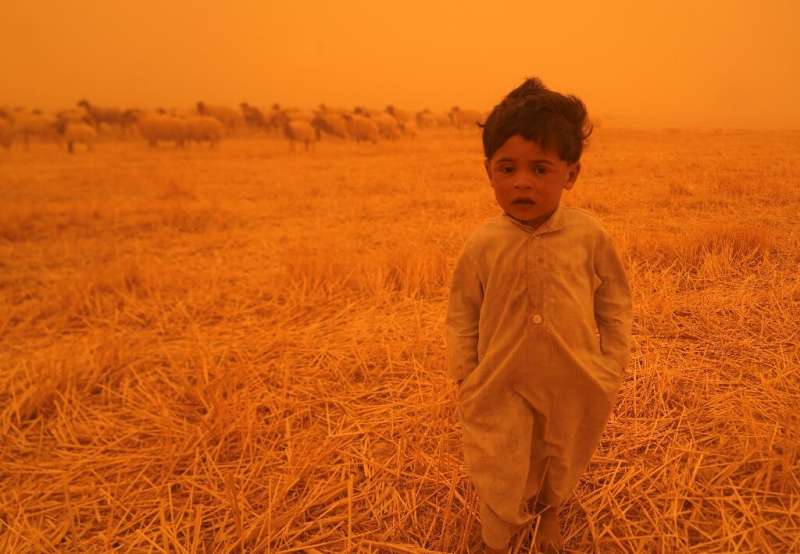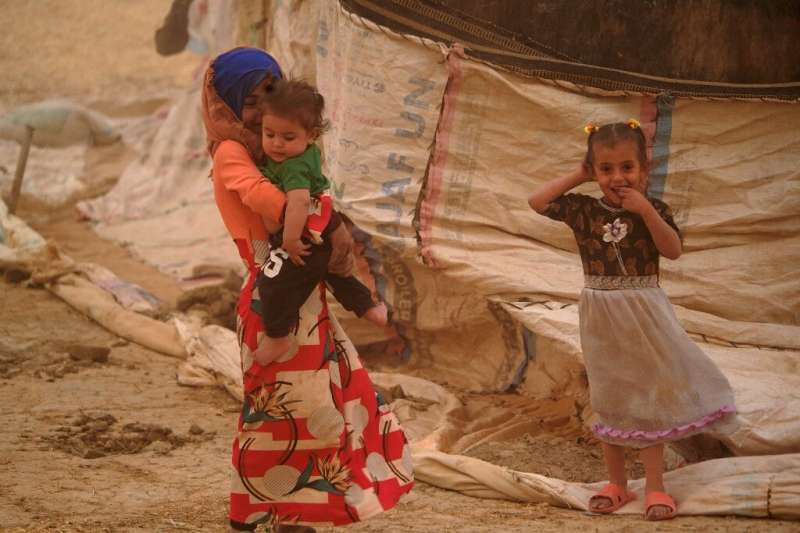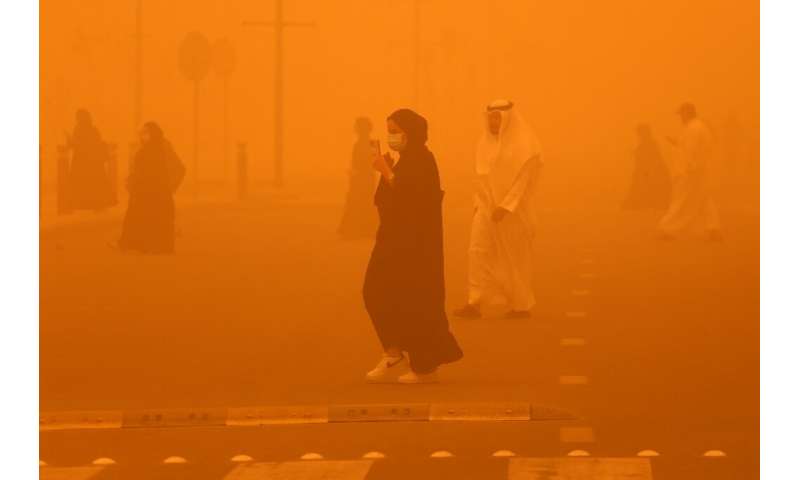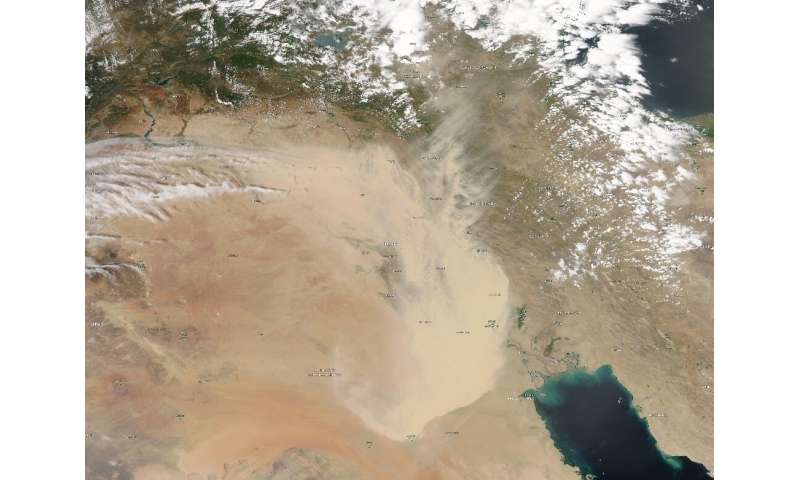Iraq sandstorm grounds flights, sends 1,000 to hospitals

Iraq closed public buildings and temporarily shut airports Monday as another sandstorm—the ninth since mid-April—hit the country.
More than 1,000 people were hospitalised across the nation with respiratory problems, health ministry spokesman Seif al-Badr told AFP.
Flights were also grounded in neighbouring Kuwait for a second time this month, as the region grapples with the increasingly frequent weather phenomenon.
Later the same day, the second heavy sandstorm in less than a week descended on Saudi Arabia’s capital Riyadh, obscuring iconic buildings like the Kingdom Centre in a grey haze.
The Iraqi capital Baghdad was enveloped in a giant dust cloud that left usually traffic-choked streets largely deserted and bathed in an eery orange light, AFP correspondents said.
South of the capital, near the Shiite shrine city of Najaf, shepherds found themselves shrouded in sheets of ochre-coloured dust.
‘Violent sandstorms’
Iraqi Prime Minister Mustafa al-Kadhemi ordered all work to cease in state-run institutions, except for health and security services, citing “poor climatic conditions and the arrival of violent sandstorms”.
Air traffic was suspended at the international airports in Baghdad, Arbil and Najaf, before flights resumed in the capital and Arbil.

Later on Monday evening, Arbil’s airport closed again “due to thick dust”, according to the state news agency INA.
Iraq is ranked as one of the world’s five most vulnerable nations to climate change and desertification.
The environment ministry has warned that over the next two decades Iraq could endure an average of 272 days of sandstorms per year, rising to above 300 by 2050.
“These dust storms usually come in the summer, but not at the same rate as recently,” said Seif al-Hamza, a doctor at a Baghdad hospital, adding that cases of respiratory problems “have increased significantly compared to previous seasons”.
Iraq’s previous two sandstorms sent nearly 10,000 people to hospital with respiratory problems and killed one person.
More trees needed
The Middle East has always been battered by sandstorms, but they have become more frequent and intense in recent years.
-

Pedestrians cross a road amidst a severe dust storm in Kuwait City.
-
![In this handout satellite image courtesy of NASA Earth Observatory taken on May 16, 2022, a dust storm engulfs parts of Iraq and]()
In this handout satellite image courtesy of NASA Earth Observatory taken on May 16, 2022, a dust storm engulfs parts of Iraq and neighbouring countries.
The trend is associated with rising temperatures and water scarcity, the overuse and damming of rivers, as well as overgrazing and deforestation.
Oil-rich Iraq is known in Arabic as the land of the two rivers, the Tigris and Euphrates, where the ancient civilisations of Mesopotamia flourished.
Iraq’s environment ministry has said the increased sandstorms could be countered with more vegetation cover, including trees that act as windbreaks.
A major duststorm last week swept across the region, also reaching Iran and the United Arab Emirates.
In Dubai, the world’s tallest building was engulfed in a cloud of dust, while more than 1,200 people were hospitalised in Riyadh alone.
Saudi authorities warned Monday of persistent heavy sandstorm conditions until after nightfall in Riyadh and surrounding areas.
Experts predict the phenomenon will worsen as climate change warps regional weather patterns, further dries out and degrades soils and speeds up desertification across much of the Middle East.
Latest sandstorm brings Iraq to standstill
© 2022 AFP
Citation:
Iraq sandstorm grounds flights, sends 1,000 to hospitals (2022, May 23)
retrieved 24 May 2022
from https://phys.org/news/2022-05-iraq-sandstorm-grounds-flights-hospitals.html
This document is subject to copyright. Apart from any fair dealing for the purpose of private study or research, no
part may be reproduced without the written permission. The content is provided for information purposes only.
For all the latest Science News Click Here
For the latest news and updates, follow us on Google News.


